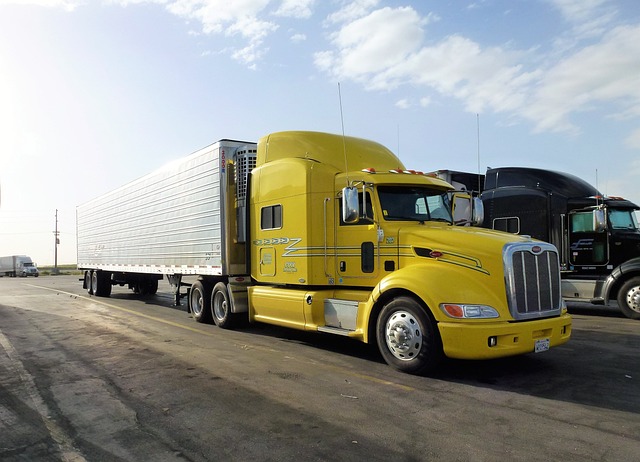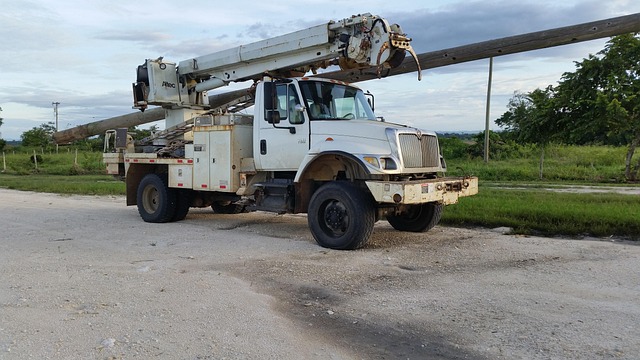Looking to register your car in California? This comprehensive guide walks you through every step of the process, ensuring a smooth transition. From understanding the requirements to obtaining your certificate, we’ve got you covered. A key part of the process is the DMV VIN verification, which ensures your vehicle’s authenticity. Follow our step-by-step instructions for a hassle-free registration experience. Also, learn about essential documents and fees to make the registration journey seamless.
- Understanding the California Car Registration Process
- Gathering Necessary Documents for Registration
- Performing a DMV VIN Verification Step-by-Step
- Paying the Registration Fees and Taxes
- Obtaining Your California Vehicle Registration Certificate
Understanding the California Car Registration Process

Understanding the California Car Registration Process
Registering a car in California involves several steps that ensure vehicles on the road meet safety and environmental standards. The process begins with gathering essential documents, including proof of ownership, insurance, and identification. Once these are ready, you’ll need to visit a California Department of Motor Vehicles (DMV) office or use their online services for vehicle registration and title transfer. A key part of this process is the DMV’s vin verification, which ensures that your car’s unique Vehicle Identification Number (VIN) matches the details on record.
For convenience, many drivers opt for mobile vin verification services, allowing them to complete this critical step from the comfort of their homes or offices. These services, provided by mobile vin verifiers, streamline the process and offer a quick and efficient alternative to traditional vin inspection at a DMV. By following these procedures carefully, California residents can ensure that their vehicles are legally registered and road-ready.
Gathering Necessary Documents for Registration

Before you start the registration process, ensure you have all the essential documents ready. The California Department of Motor Vehicles (DMV) requires a variety of paperwork to verify your vehicle’s ownership and identity. This includes the vehicle’s title, which proves ownership, and the Vehicle Identification Number (VIN), a unique code that identifies specific characteristics of your car. A crucial step in the registration process is undergoing a DMV VIN verification, which ensures the vehicle’s authenticity.
For convenience, many individuals opt for mobile VIN verification services. These services send a trained inspector to your location to complete the VIN inspection promptly. Alternatively, you can perform a self-check using resources available on the DMV website or turn to online tools provided by mobile vin verifiers. This initial documentation preparation streamlines the registration procedure and saves time.
Performing a DMV VIN Verification Step-by-Step

Performing a DMV VIN Verification Step-by-Step:
To begin the registration process in California, one crucial step is the DMV VIN (Vehicle Identification Number) verification. This ensures that your car meets all safety and legal standards before hitting the road. Here’s how to do it step-by-step:
1. Gather necessary documents, including your vehicle’s title, proof of insurance, and current registration (if applicable).
2. Visit a California DMV field office or use their online services for VIN verification. If opting for a mobile vin verifier, you can also complete this process remotely with the help of certified apps or professionals who offer mobile vin inspection services.
3. Provide your vehicle’s information, including its make, model, year, and VIN number. This data is cross-checked against the DMV’s records to ensure accuracy.
4. A trained DMV inspector will physically inspect your car to verify that it matches the provided details. They’ll check for any discrepancies between the information on the title, registration, and physical characteristics of the vehicle.
5. Once the inspection is complete, if your car passes, you can proceed with the registration process at the DMV or through an online portal. If there are issues found during the mobile vin verification, you may need to resolve them before completing the registration.
Paying the Registration Fees and Taxes

When registering your car in California, you’ll need to pay various fees and taxes, including a vehicle registration fee and a tax on the vehicle’s value. The California Department of Motor Vehicles (DMV) offers several payment options, typically requiring you to present valid identification and proof of insurance. One crucial step before paying is to undergo a DMV VIN verification process, ensuring your vehicle’s unique identifier—the Vehicle Identification Number (VIN)—is accurate and matches the data in their system.
You can facilitate this process with a mobile VIN verification service, allowing for a swift and convenient check. This service compares your vehicle’s information against the DMV records to confirm the VIN details. With this step completed, you’re one closer to securing your car’s registration, ensuring compliance with California’s regulations.
Obtaining Your California Vehicle Registration Certificate

After gathering all the necessary documents, it’s time to obtain your California Vehicle Registration Certificate. This process involves a trip to the Department of Motor Vehicles (DMV) or, for added convenience, utilizing a mobile vin verifier. Start by ensuring your vehicle meets all safety standards and environmental regulations set by the state. One crucial step is the DMV vin verification, where they cross-check your vehicle’s unique identification number (VIN) against their records to confirm its authenticity and ensure it complies with California’s legal requirements.
A mobile vin inspection or mobile vin verification service can be a time-saver if you’re short on time or have difficulty accessing a DMV office. These services allow you to get your VIN checked remotely, streamlining the registration process. Remember, accurate and up-to-date information is key, so double-check all details before submitting your application to avoid delays in receiving your official California Vehicle Registration Certificate.
Registering a car in California involves several steps, from gathering essential documents to completing a DMV VIN verification. By understanding the process and ensuring all requirements are met, including accurate VIN data, you can streamline the registration experience. Remember to pay the necessary fees and taxes, and you’ll be on your way to obtaining your California vehicle registration certificate, enabling you to legally operate your vehicle within the state.
